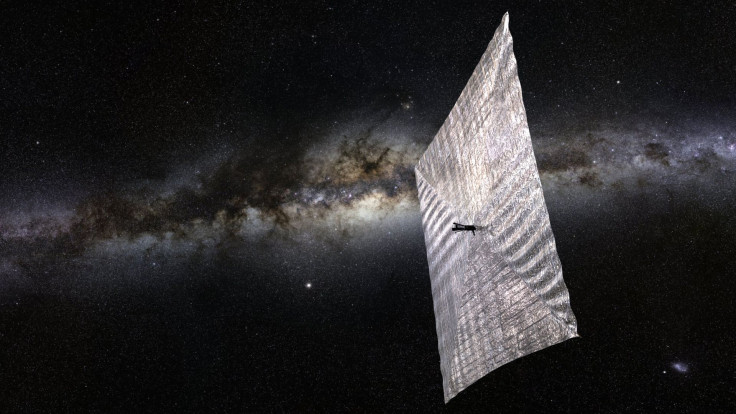LightSail Solar-Powered Spacecraft ‘Whirrs To Life,’ Deploys Tiny Solar Sail

LightSail, an experimental solar-powered spacecraft, which had been orbiting the earth over the past few weeks without making ground contact due to a series of technical glitches, sprung back to life, allowing its team to deploy its solar sail Sunday afternoon. The unmanned spacecraft was launched on May 20 aboard an Atlas 5 rocket.
The LightSail craft is operated and financed by the Planetary Society, a California-based nonprofit organization that promotes space exploration. Following its launch last month, the spacecraft encountered a software glitch and went offline for eight days. The team also had to deal with a troubled battery before its motor began unfurling a thin 340-square-foot sail on Sunday, Discovery News reported.
“Sail deployment began at 3:47 p.m. EDT (19:47 UTC) off the coast of Baja California, Mexico, as the spacecraft traveled northwest to southeast,” Planetary Society said, on its website. “Power levels were consistent with ground-based deployment tests, and the spacecraft’s cameras were on.”
The organization, however, said that LightSail will remain "out of reach" until 2:26 a.m. EDT on Monday, when ground control teams will begin downloading images taken by the spacecraft’s cameras.

“LightSail is back in business, following the second extended outage of the test spacecraft’s mission,” Planetary Society said on its website after the spacecraft transmitted data on Saturday.
The LightSail craft was developed to demonstrate an alternative space propulsion system, known as solar sailing. The technology uses the pressure of photons of sunlight that bounce off its thin-film surface to generate a forward motion, much like a boat's sail uses wind to propel the craft forward.
“We couldn’t get signals to and from our LightSail on the first orbital pass, so we tried again on our next orbit— and it worked! We’ve learned a lot about perseverance on this test mission,” Bill Nye, the CEO of Planetary Society, said in a statement.
© Copyright IBTimes 2025. All rights reserved.






















